Dodge Charger (2006-2023) firing order — diagram & guide

Ever since the 1960s, the Charger has been one of Dodge’s most beloved models and it later on became the longest-running car ever made by the brand. However, there was a hiatus in production during the 1990s, so the Charger returned back in 2006.
If you own one of the more recent models from the mid-2000s onward, our guide on the Dodge Charger (2006-2023) firing order should help. We’ll give you everything you need to know regarding the firing sequence of all the Charger engines used during that time, and we’ll take a slight detour to discuss the cylinder numbering, so make sure to stand by for details.
| CHARGER YEARS | ENGINE | FIRING ORDER |
|---|---|---|
| 6th Gen (2006-2010) | 2.7L V6 | 1-2-3-4-5-6 |
| 3.5L V6 | 1-2-3-4-5-6 | |
| 5.7L V8 | 1-8-4-3-6-5-7-2 | |
| 6.1L HEMI V8 | 1-8-4-3-6-5-7-2 | |
| 7th Gen (2011-present) | 3.6L V6 | 1-2-3-4-5-6 |
| 5.7L V8 | 1-8-4-3-6-5-7-2 | |
| 6.2L V8 | 1-8-4-3-6-5-7-2 | |
| 6.4L HEMI V8 | 1-8-4-3-6-5-7-2 |
Sixth-generation Dodge Charger (2006-2010) firing order
The sixth-gen Charger returned with a bang after the hiatus of the model during the 90s and the early 2000s since there were loads of different engines offered. There were two base V6 engines and two V8s so we’ll go through all of these to bring you firing order details.
Dodge Charger 2.7L firing order
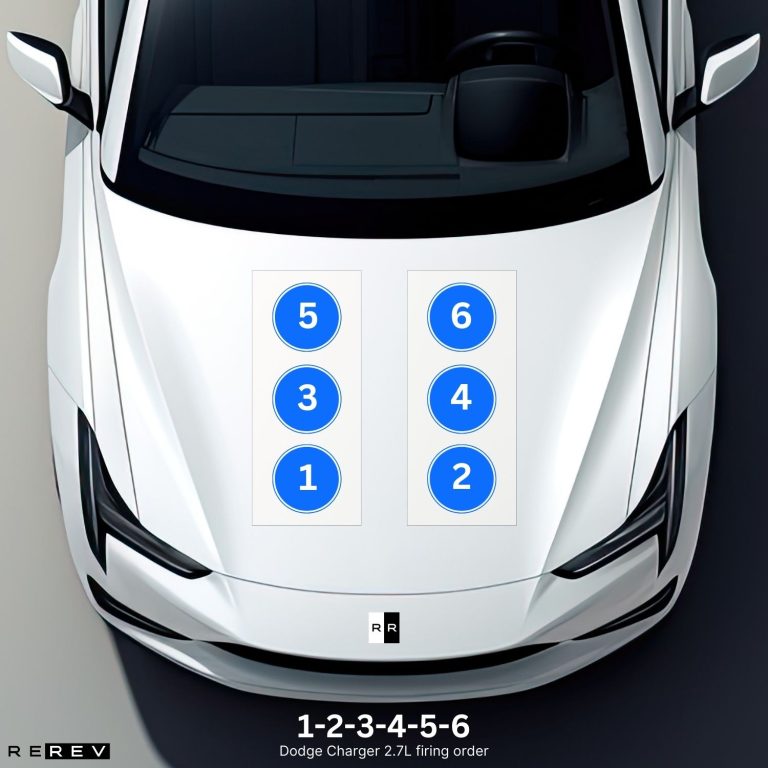
The Dodge Charger 2.7L firing order is 1-2-3-4-5-6 and this engine was primarily used in police vehicles made from 2006 to 2010. There were far fewer production passenger cars with this engine, but we still have to mention all the details for those who might own them.
So, the cylinders are arranged in a sequence 1, 3, and 5 on the passenger’s side, and 2, 4, and 6 on the driver’s side, looking at the engine from front to rear.
Dodge Charger 3.5L firing order

Up next we have another V6 engine used in a sixth-gen Charger and that’s a 3.5-liter V6 also used in a variety of other Dodge and Chrysler models. Once again, the firing order is 1-2-3-4-5-6 and the cylinders are arranged in the same way as for the 2.7L engine.
That means you’ll find the first cylinder as the front cylinder of the passenger’s side bank, and the second cylinder would be the front-most cylinder on the driver’s side.
Dodge Charger 5.7L firing order
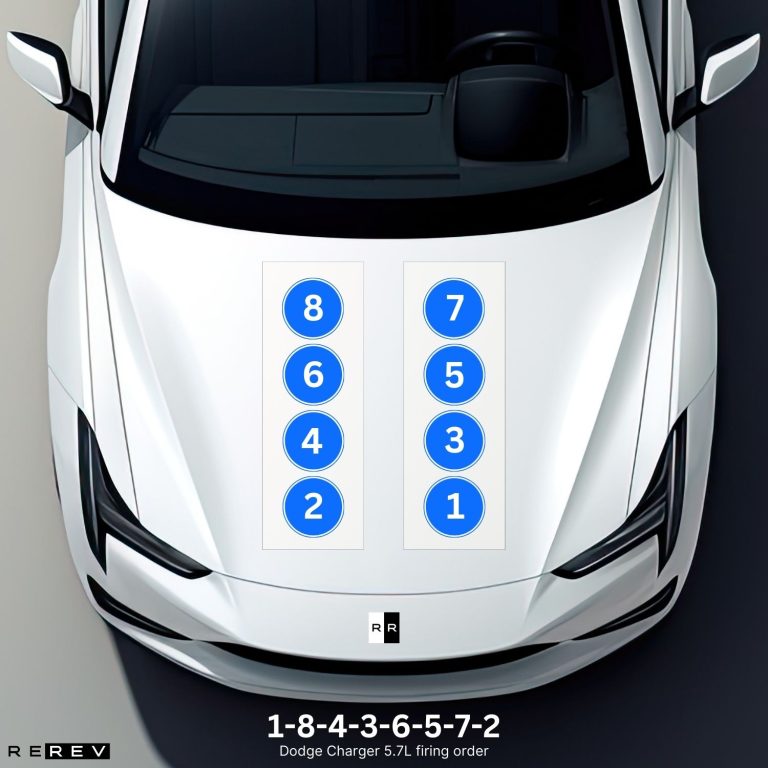
As the first V8-powered model of the sixth generation, the Dodge Charger 5.7L firing order is 1-8-4-3-6-5-7-2. This V8 is fairly simple to work on since the cylinders are divided into two cylinder banks, both containing four cylinders each.
Plus, the cylinders on the driver’s side are all odd numbers, so they go 1, 3, 5, and 7 front to rear on that side. The other side includes even cylinder numbers 2, 4, 6, and 8 ordered front to rear on the passenger’s side.
Dodge Charger 6.1L HEMI firing order
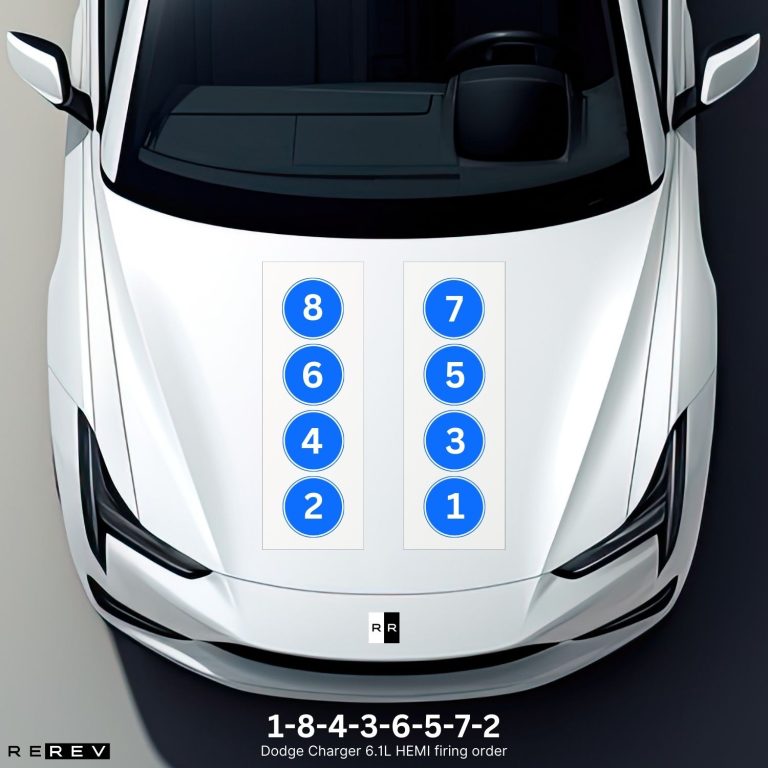
For the high-performance sixth-gen Charger model, Dodge used a 6.1-liter HEMI V8 engine. So, the Dodge Charger 6.1L HEMI firing order is 1-8-4-3-6-5-7-2 and this is the same firing pattern that the previous 5.7L engine has used.
Things get even simpler here because of the matching cylinder layout to that of a 5.7L V8, so you won’t have to worry about mixing up the specs for these two V8 engines. Once again, the cylinders of a 6.1-liter V8 are arranged 1, 3, 5, and 7 front to rear on the driver’s side, and 2, 4, 6, and 8 front to rear on the passenger’s side.
Seventh-generation Dodge Charger (2011-present) firing order
The 5.7-liter V8 was the only engine that kept on with production from the sixth-gen Charger into the seventh generation. So, there were new base V6 and HEMI V8 engines for this generation, so we’ll focus on these next.
Dodge Charger 3.6L firing order
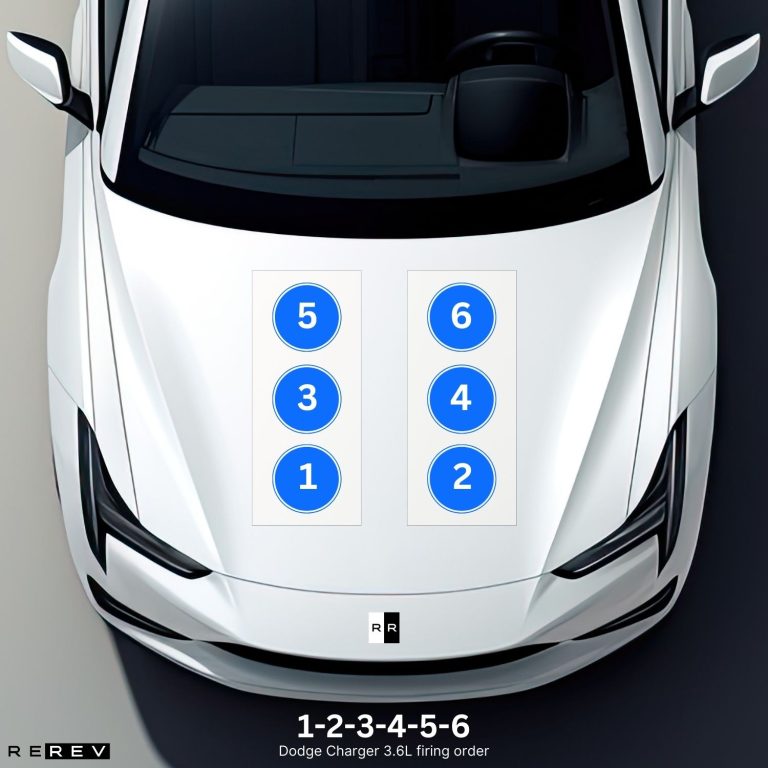
Just like with the 3.5-liter sixth-gen model, the Dodge Charger 3.6L firing order is 1-2-3-4-5-6, and the cylinder layout is similar as well. With this engine, you’ll find the first cylinder on the passenger’s side along with cylinders 3 and 5.
Driver’s side cylinders are ordered 2, 4, and 6 front to rear, so it’s once again a simple Dodge V6 configuration that comes in handy for applying the firing order.
Dodge Charger 6.2L firing order
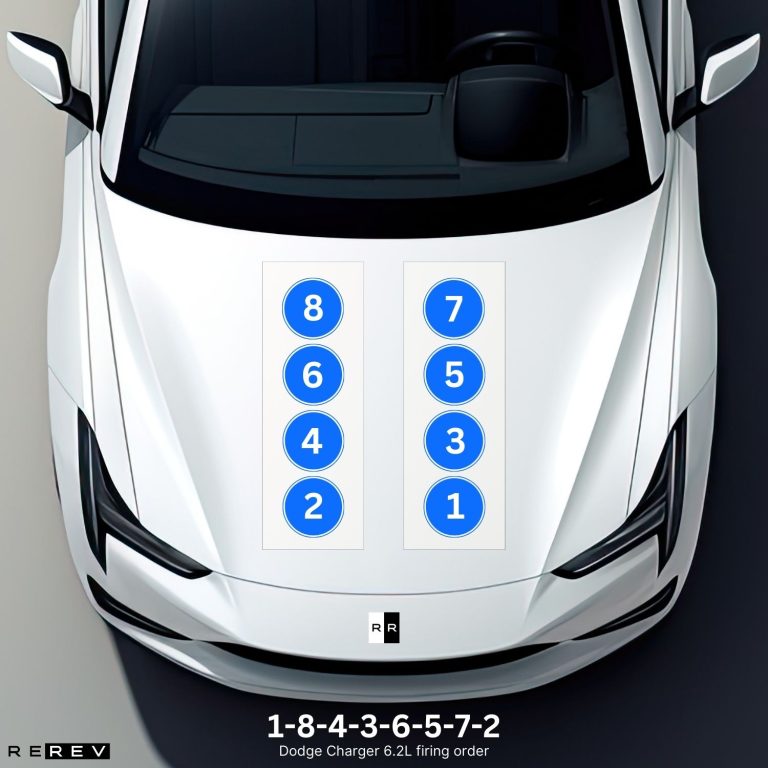
For the Dodge Charger Hellcat model, the brand introduced an all-new 6.2-liter HEMI V8 engine. So, the Dodge Charger 6.2L firing order is 1-8-4-3-6-5-7-2, and just like with the previously mentioned HEMI engines, the cylinder configuration also matches.
To put it simply, all the cylinders are divided into even and odd cylinder banks, and the driver’s side bank includes odd cylinder numbers 1, 3, 5, and 7. On the other hand, the passenger’s side cylinders are ordered 2, 4, 6, and 8 front to rear.
Dodge Charger 6.4L HEMI firing order

We’ll wrap up this guide with one of the most capable V8 engines ever put into a Charger and it’s a 6.4-liter HEMI V8. The Dodge Charger 6.4L HEMI V8 firing order is 1-8-4-3-6-5-7-2 so it’s again a common firing pattern for all the HEMI V8 engines of this generation.
Plus, the cylinder arrangement is also the same which makes it easier to figure out how you’ll apply the firing order. Cylinders 1, 3, 5, and 7 are all aligned on the driver’s side front to rear, with even cylinder numbers from 2 to 8 being on the opposite side.
Our take
The beauty of owning a Charger is in the diversity of engine options it offers for everyone’s taste, so we hope we’ve helped all our fellow drivers with this guide. If you can achieve high upkeep standards, you’ll surely be able to maintain the engine yourself, so feel free to use this guide as an outline for that.